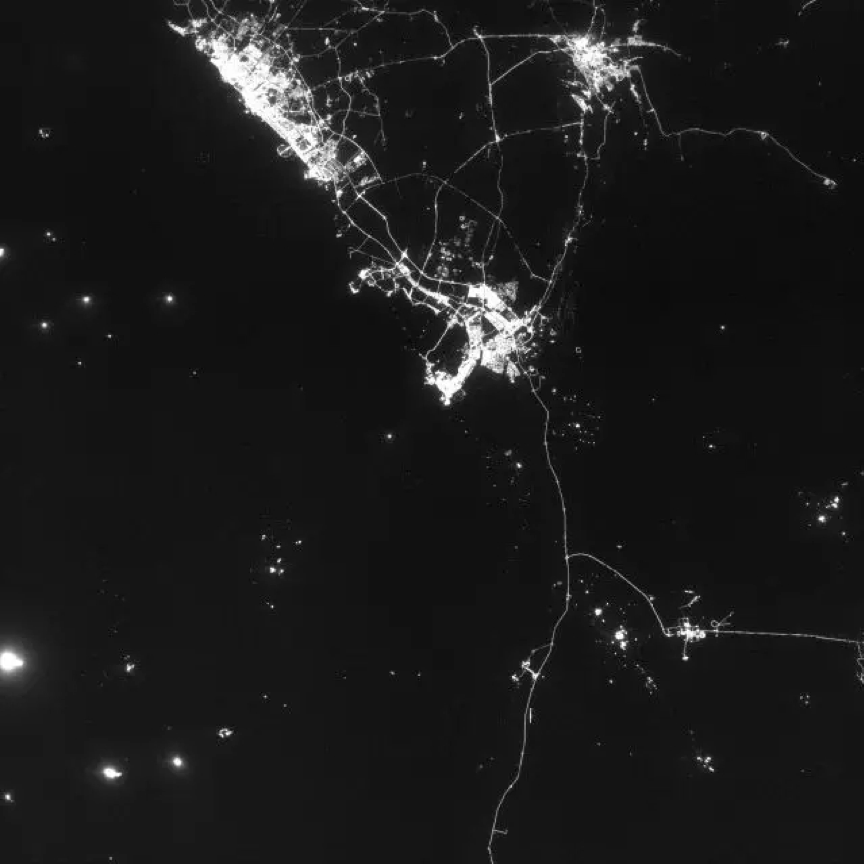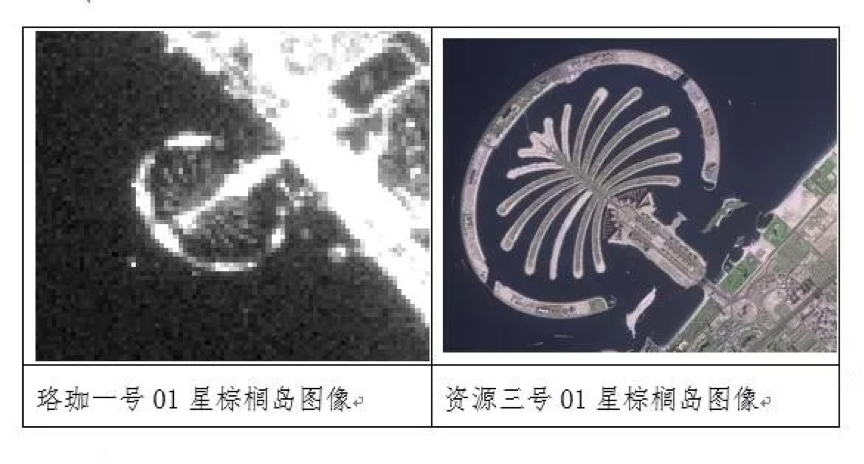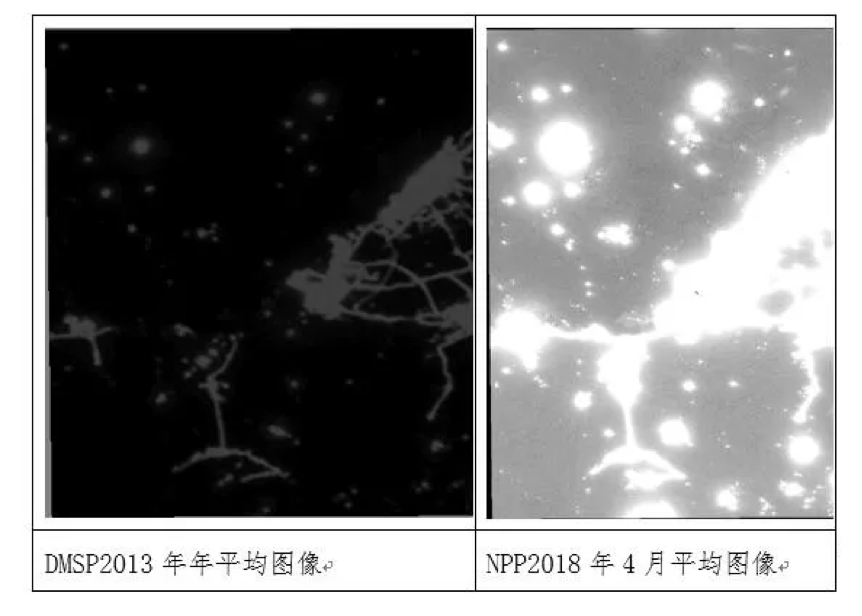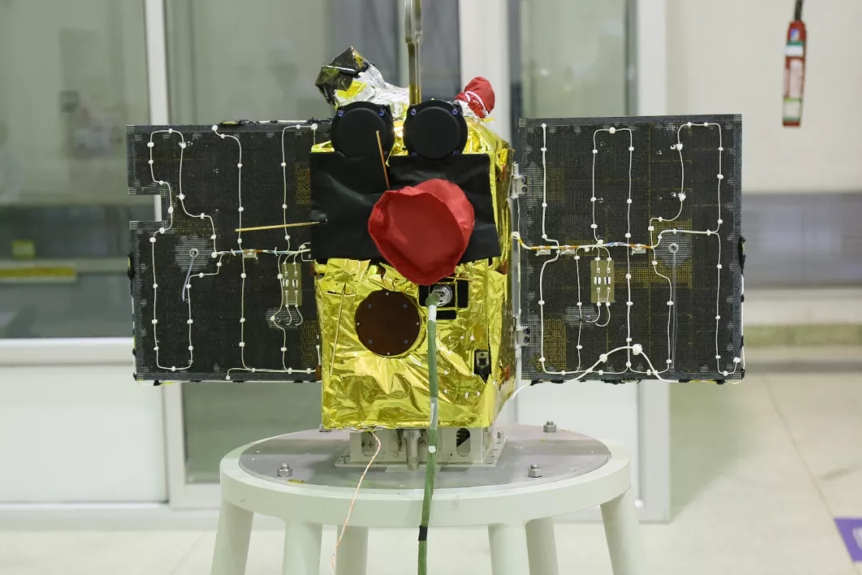At 11:25:34 on June 4th, the scientific experiment satellite Luojia 1 successfully transmitted its first image. The image is about the Abu Dhabi and Dubai of the United Arab Emirates, where the Palm Island and the road network are clearly shown.
The major satellite launched together with Luojia 1 is Gaofen-6. Technicians from WHU take participation in processing its first image.

The first image
On June 2nd, the UHF monitoring stations at Jiuquan and Jinghe received the first telemetry data from Luojia-1. Subsequently, Wuhan Station and Changchun Station also received telemetry data showing that the panels of Luojia-1 unfolded normally and that the satellites worked well. At 21:53 on June 3rd, considering satellite orbit and weather condition, the technician team of Luojia-1 planned to take photos of Abu Dhabi and Dubai in the UAE. On June 4th, the imaging was completed at 2:48 and then received by Wuhan Station at 11:16. After decompression of cataloging and radiation correction, the first image of Luojia-1 was shown below.

Image of Palm Island by Luojia-1(left) and image of Palm Island by ZY-3 Satellite (right)
The Defence Meteorological Satellite Program (DMSP) in USA is the only military-dedicated meteorological satellite in the world. The acquired nighttime light images have been increasingly employed to study human activities. In recent years, they have been widely utilized in such areas as urban expansion, economic activity evaluation, estimation of population density, electricity consumption and carbon emissions, light pollution, and disaster assessment.
The National Aeronautics and Space Administration (NASA) in USA operates a number of satellite systems, including the important NPOESS Preparatory Project (NPP) for detecting the Earth’s environment and atmosphere, tracking atmospheric ozone and aerosols, and marine and terrestrial surface temperature. It also monitors sea ice and land glaciers, as well as natural disasters including volcanic eruptions, forest fires, droughts, floods, sandstorms, and hurricanes/typhoons. In short, NPP mainly undertakes future geoscience missions by detecting earth health from space and providing long-term sequence data.

Average image in 2013 from DMSP (left) and average image in April, 2018 from NPP(right)
Comparing with DMSP and NPP data, it can be seen that the data transmitted by Luojia-1 truly reflects the brightness of night lights. Academician Li Deren, chief scientist of Luojia-1, explained that in addition to the estimation of DMSP and NPP social and economic parameters, Luojia-1 is able to assess the division of urban functional areas.
The satellite was co-developed by WHU Chang Guang Satellite Technology Co., Ltd., WHU being the initiator.This is the first satellite of the series of "WHU’s Luojia-1 Scientific Experiment Satellite". The R&D personnel call it the Luojia-1 01 satellite, which is mainly used to test low-altitude night-light remote sensing and navigation signal enhancement technologies.

Luojia-1 01 Satellite
With a total weight of 22kg, it employs large relative aperture telecentric optical system, stray light suppression by Baffle Servo System and large pixel high-sensitivity imaging devices to achieve a highly sensitive and dynamic range night-light imaging technology. It has a resolution of 130m and a 250km-wide luminous imaging capability, with a dynamic range of up to 15 bits. It can show the details of the luminous brightness changes and bring rich application scenarios, therefore providing reliable data for studies based on night-light remote sensing macroeconomic analysis.
"In order to give a full play to the luminous data of the Luojia-1 01, WHU has conducted in-depth research with relevant advantageous teams form home and abroad to fully utilize the luminous remote sensing, thus contributing to the sustainable development of human society," said Li Deren.
(Photo from the Internet)
(Rewritten by Li Xin, Edited by Zheng Lingling, Shen Yuxi, Liu Jiachen and Liu Xiaoli)